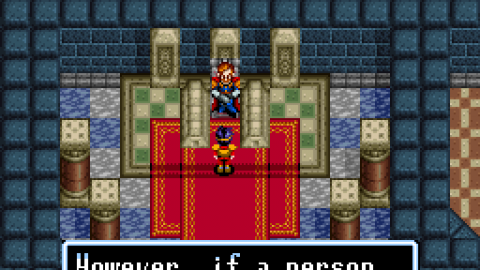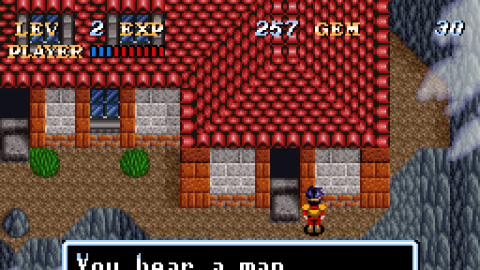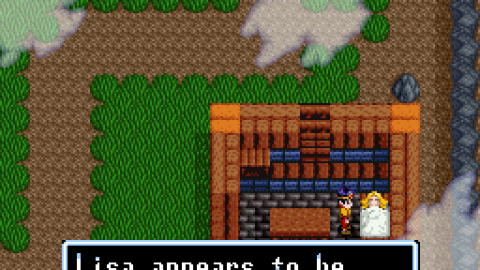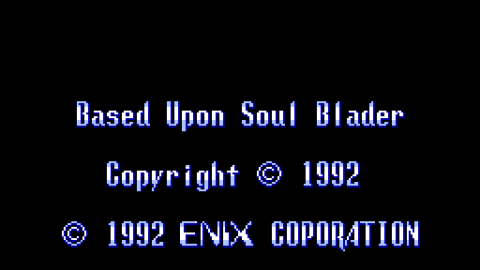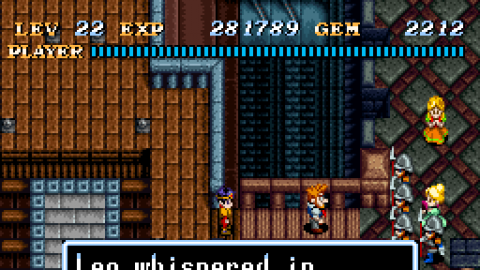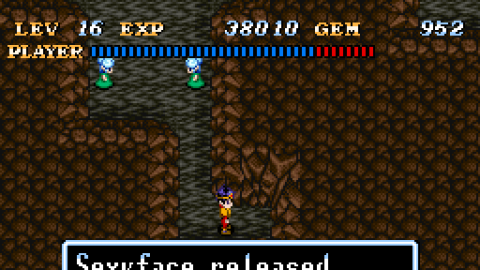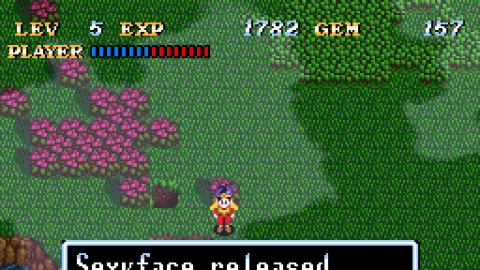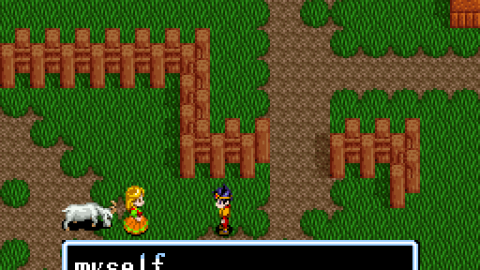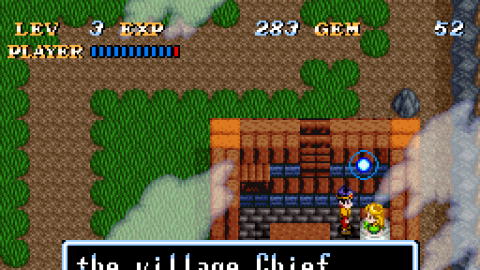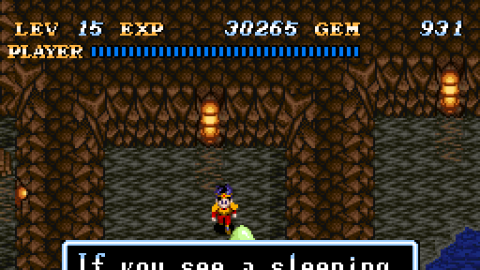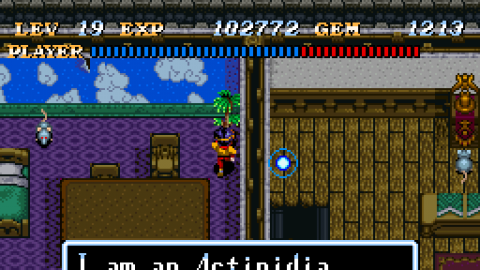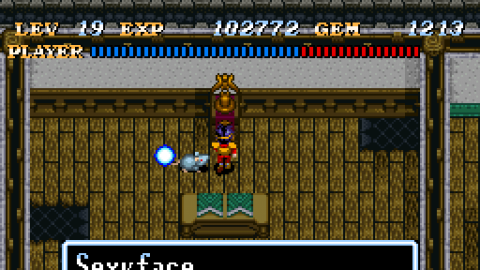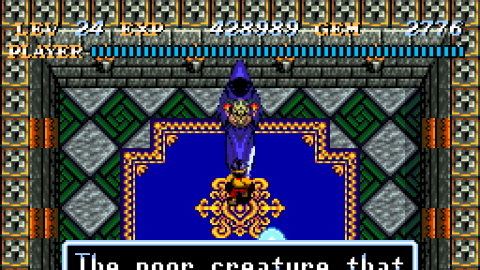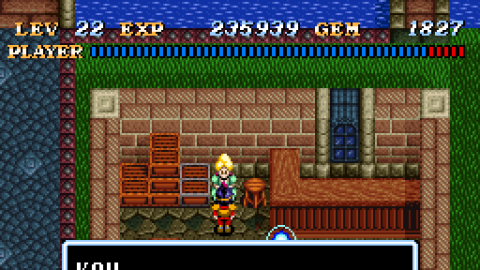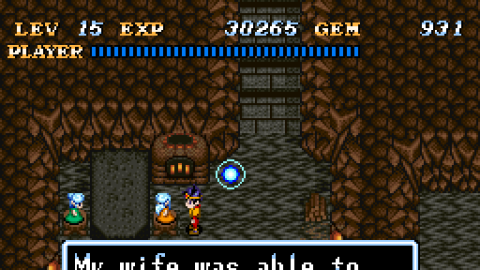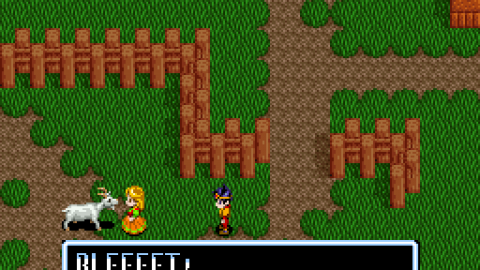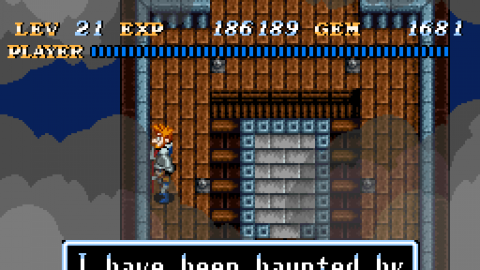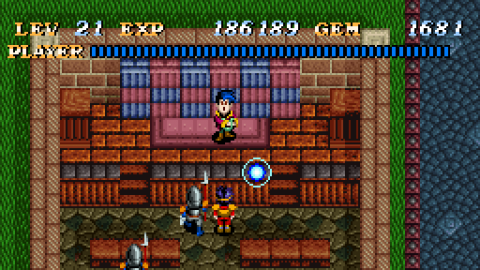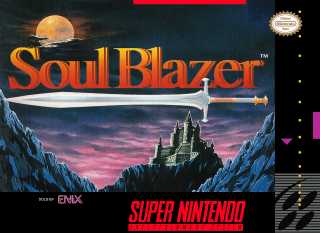Overview
Soul Blazer (Soul Blader in Japan) is an action adventure RPG developed by Quintet and published by Enix (which is now known as Square Enix). In PAL territories, it was published by Ubisoft. Soul Blazer was developed for the Super Nintendo Entertainment System and was released in Japan, America and in Europe. The player takes the role of an angel, who is sent by "The Master" to destroy the world's monsters and release the people from the captivity of Dark Gaia.
There are eight levels to the game that follow various themes, such as Haunted House, Underwater and Forests.
Characters
The Hero (a.k.a. "Blazer") : The protagonist of the game who seeks to restore the world that was locked away by Deathtoll.
The Master (a.k.a. "Gaia") :
Guides the protagonist through the world via the Shrine, instructing him on occurring conflicts.
Lisa :
Dr. Leo's daughter, who gives the player her fathers old paint brush which allows entrance into Leo's Painting. She is later seen during Magrid Castle as a prisoner.
Doctor Leo :
The creator of the many inventions in the game, along with being Lisa's father. He was captured at the beginning of the game by King Magridd's soldiers to build a machine to contact Deathtoll. Afterward, he sacrifices to stop the Queen from killing his daughter.
Village Chief :
The chief of Grass Valley who was sealed in Leo's painting by Metal Mantis to prevent the collection of the brown stone.
Guardian of the Forest :
The overseer of Green Wood, imprisoned by Deathtoll sealing the green stone within the roots.
Mermaid Queen :
Ruler of the underwater city of Oceania - she guards over all aquatic forms in the sea.
GEM Fairy :
Helpful fairies that guide the player throughout the game. They are imprisoned in jewels, but if players get near one, they will appear and talk to them, providing helpful information and allowing the hero to teleport back to towns.
Death Toll : The demon who imprisoned everyone in the world. Not much else is know about him other then the fact his intentions are evil.
Gameplay
Mechanics
Soul Blazer shares concepts with many other top-down action-adventure games or action-RPGs. There is a mixed emphasis on directly-controlled combat; linear "exploration"; item collection; light puzzle-solving and NPC interaction.
In combat, the player character is capable of movement in four cardinal directions--no diagonal movement--and can attack in those same directions. His sword slash, which is the primary means of attack, has a wide range that can even reach enemies behind him and to the side (though not directly behind him). As in The Legend of Zelda: A Link To the Past, he can also hold his sword out straight in front of him for a "thrust" attack that will damage any enemy directly in front of him. (This deals significantly less damage than the regular sword slash.) In this stance (achieved by holding down one of the SNES shoulder buttons), the hero continues to face the same direction--but can move in all directions.
Neither the hero, nor enemies, stagger back when hit. This makes it possible for the player to deal many successive blows to an enemy without having to move. This also prevents the player from ever being knocked into another enemy attack, helping to avoid the helpless pinballing situation that is occasionally encountered in other games--such as Ninja Gaiden, for one. But it's also possible for a player who is focused on the offensive to lose track of just how many times s/he is getting hit and come dangerously close to being defeated.
The hero is also capable of attacking with different magic spells that are gradually obtained at specific points throughout his journey. A wizard who is encountered almost immediately after the game begins transforms himself into an orb of light that constantly circles around the hero in a fairly wide diameter, and it's from this orb that the magical attacks manifest. As such, it can be very challenging to land a successful hit with a magical attack. Each magical attack consumes a certain amount of GEMs, which can be accumulated through pickups left behind by slain enemies.
Defeated enemies reward the player with experience points, the quantity of which are displayed in small numbers as each enemy is slain. As experience points are amassed, so are experience levels; each level-up results in an additional hit point, as well as either an increase in attack strength; an increase in defensive power; or both. The hero will also acquire new weapons and armor that will provide even more offensive and defensive boosts, respectively.
Gameplay Loop
Per the plot of Soul Blazer, the hero's main task is to liberate souls--humans, plants, and animals alike--to reconstruct or repopulate areas of the world made barren by the villain. This mission is laid out such that each of the game's main areas is divided into two main zones: one which is combat-free and one in which combat is the primary concern.
Each combat-free zone--or town, if one prefers--starts out almost empty, with only a single sentient being and a direct path into a combat zone.
Once in the combat zone, which can be one of a variety of types of areas (outskirts, the ocean floor, dungeons, shrines), the hero must defeat enemies which spawn out of generators or lairs--similar to those found in the Gauntlet series. The generators themselves are indestructible by direct hits--they are eliminated only when the player has defeated all of the enemies that they had to offer.
Once eliminated, the generator leaves behind a glowing switch that--when stepped upon--will either liberate one of the souls that used to live in the corresponding town, or open up a path for the hero to delve further into the combat zone. In the case of the former, the player may choose to go back to town to interact with the newly-freed soul or continue fighting deeper into the combat zone. However, the player will eventually come to a roadblock in the combat zone that requires him to return to town to interact with the appropriate soul, who will either remove the obstacle outright or give the hero an item with which he can remove the obstacle himself.
Certain town interactions require the player to do more than simply talk to the soul; frequently, the player is asked to find and deliver an item before he will be assisted. In other instances, the hero must use a special item to enter the dreams of sleeping town inhabitants to gather clues on how to surmount the roadblock. Others, still, require the hero to follow around a particular inhabitant about town.
Each town offers a way to obtain a medical herb (a single-use item, of which only one can be carried, useful for automatically replenishing hit points when the player has been completely drained) and safe passage to the main hub where the hero can save the game, take a shortcut to teleport pads unlocked in the combat zone, or move to another town entirely. Thus, the player may find him or herself directing the hero from combat back to town frequently to restock on medical herbs and save the game.
As the hero fights deeper and deeper into the combat zone, the town will gradually grow back to its former glory, and if all the required roadblocks have been eliminated in the combat zone, the player will be able to access the boss character of the combat zone. Once defeated, the area is cleared, and the player may move onto the next town in the game. The combat zone remains open, however, and the player can thusly return to previously-visited zones in order to kill certain enemies that require advanced equipment to defeat.
Enemy generators do not respawn; in fact, only a scant few enemies--that don't come from generators--respawn. As such, the hero does not need to wade through hordes of the same enemies he already defeated, making repeated trips into the combat zone a bit easier to swallow. However, this also makes level-grinding a difficult endeavor until or unless the player finds one of the few-and-far-between patches of respawning enemies to slay. If the player is diligent about destroying all enemy generators in the non-combat zone before encountering the boss (note that some generators are not mandatory to destroy), it's almost impossible for the hero to be "underleveled" for a boss encounter.
Critical Reception
When released Electronic Gaming Monthly issued the following scores, 8,9,8,8 adding, "A great action/adventure cart that's loaded with great graphics and sounds and a long quest. The game is fast and the pace is just right if you need a little action with your role-playing. The quest is a little easier than I expected and can be solved in a few hours. Great music and visuals keep you coming back for more".

 Super Nintendo Entertainment System
Super Nintendo Entertainment System